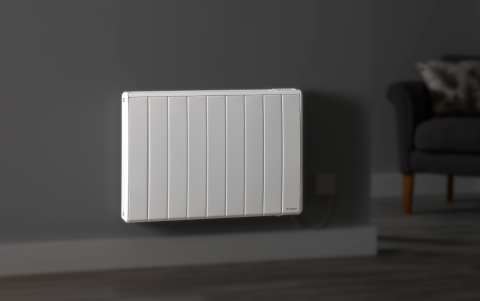
Storage and the Net Zero Energy Supply Chain

What stands between us as the zero-carbon future to which we are committed is possibly the greatest challenge that the combined industries of the UK have ever faced.
The Electricity Products Supply Chain Council has been set up as we must fundamentally review our complete supply chains, scaling up for the increased demand whilst identifying and removing carbon-producing practices and replacing them with alternatives which are carbon neutral. Done correctly, this change also offers the opportunity to create jobs and growth in a circular economy which provides better, affordable technologies and a higher standard of living to all.
We at Glen Dimplex Heating & Ventilation are on our own journey towards living this value. Part of this has been the review of our purpose, which we have defined as being ‘leaders in the transition to a sustainable world’. We’re also committed to Beama’s ‘Net Zero by Design’ report and the decarbonisation pledge that this includes.
In the broader context, the UK has pledged to reach net zero carbon emissions by 2050, and to do that it will need to dramatically increase its use of natural renewable energy sources such as wind and solar, in order to reduce the UK’s economic reliance on carbon emitting energy sources such as oil, natural gas, and coal.
We need to work out as an industry how we can support this transition as today, electricity generation must be matched to energy usage. The UK grid could not be solely supported by wind and solar generation as these natural energy resources do not provide a consistent volume of energy, nor can their variations be matched easily to those of our energy demand, which can be highly variable in its daily, weekly, and seasonal fluctuations.
This means higher carbon electricity generation from coal or gas-fired electricity plants is needed at peak electricity demand times, whilst a few hours later, renewable wind generation may be curtailed because there are consistent winds and no requirement for their energy. Where peaks can’t be met in the UK, power cuts may become more common. With the recent introduction of so much new renewable energy generation, which is by its nature variable, and the UK’s commitment to make the electricity grid carbon neutral by 2035, it seems to me that the effective storage of excess power during times of low demand and high production are needed address this challenge. Our limit should be the area under the graph, not it’s peak.
By creating a market for electrical storage products of all types, and the infrastructure to support them, we will also create space on the electrical supply grid for a much greater number of electrical device connections, helping to accelerate the electrification not just of domestic buildings; but of businesses, transportation and other UK industry sectors. In summary, the more we store, the more we can connect, and that’s good for everyone!
Looking ahead, we must consider the challenges that variable power generation by natural resources such as wind and solar will have on the UK electricity grid and how smart, modern energy storage may be used to transition the grid from a supply-side managed to a demand-side managed profile. We must consider how providing the UK’s electricity-generating network with a storage buffer, and a range of potential demand profiles, will allow for the planned management of natural resource usage over their curtailment in place of high carbon alternatives. These seem like very big problems to solve, however the answers are all around us.

Energy storage and demand side response is a developing industry with many commercial and domestic solutions. I would like to focus more specifically on how developing our existing thermal storage battery network to allow for the development of flexible energy markets to support the UK’s decarbonisation agenda may solve problems for the UK’s electrical grid, and for its consumers.
A dense, national thermal store in the form of hot water tanks, smart storage heaters, chemical phase change storage mediums and many other technologies would mean that electrification – in this instance of heat in buildings – can take place in a way that best uses the generation and transmission capabilities that we currently have. Whilst we will surely need to expand our generation and transmission capabilities in the future, the prescribed battery would mean that we can start electrifying buildings more quickly today, rolling out more heat pumps and so being far more likely to reach our targets.a
Likewise, the electrification of transportation is simplified by the flexible nature of batteries within electric vehicles, with the transportation industry also bringing flexibility along with its additional load on the grid.
These technologies already exist, and the flexible energy market that they create produces revenue at the very top, where renewable generation investment return is maximised and capacity grows. This revenue runs through the utilities which can trade energy using the data created by the smart meters, smart devices and ‘virtual powerplants’ that local generation and demand flexibility provide, and will be passed on in part to the consumers who’s technology and modified (automated) behaviours make it all possible.
It is very hard to justify this end-to-end supply chain for any single product or segment, however if a structure exists then even the smallest incremental attachment to it is a net gain which can be rewarded. It is with this mindset that a technology agnostic version of an EV charging tariff, or the Economy Seven off peak tariff, becomes a mechanism that can recognise smart white goods, smart thermostats, intelligent building controls and too many other technologies to mention.
This brings me back to the Electrical Products Supply Chain Council, and the importance of working together on integrated solutions that put the consumer at the heart of a new approach to energy that is better for all.
The question I hear all to often is ‘how do we generate more energy’. This needs to be answered however, we must first ask:
How do we use less energy?
How do we store more energy?
How can we use energy at a better time?
“If we as an industry can consider these things across the broad spectrum of roles that we all fulfil, then I really do believe that electrification can be delivered in way that benefits everyone involved.”











